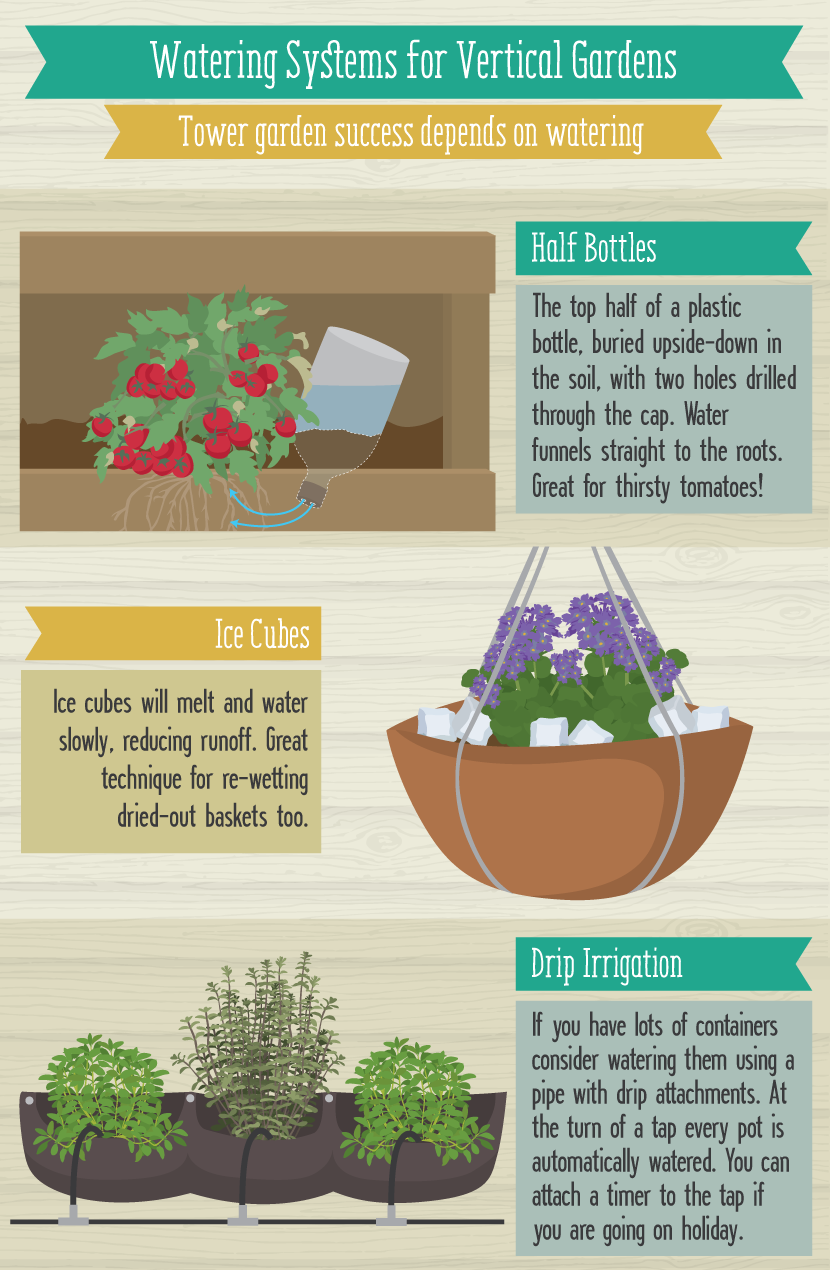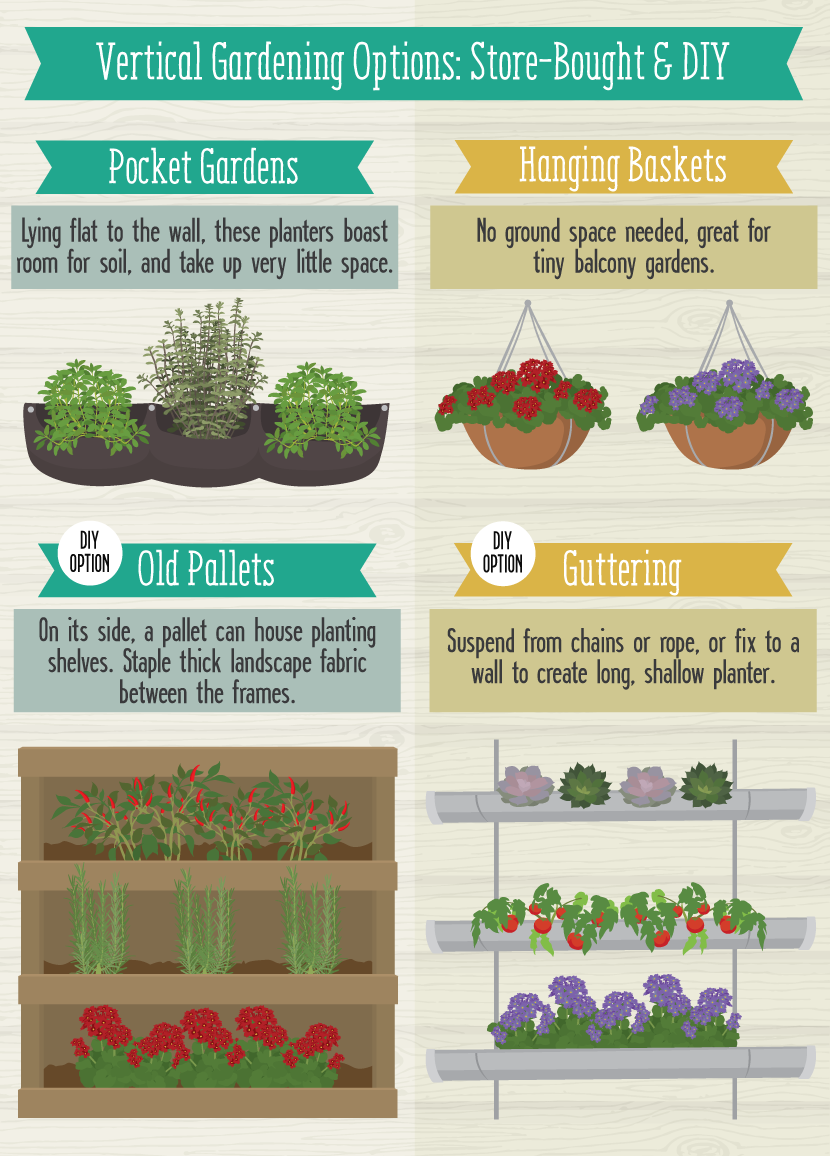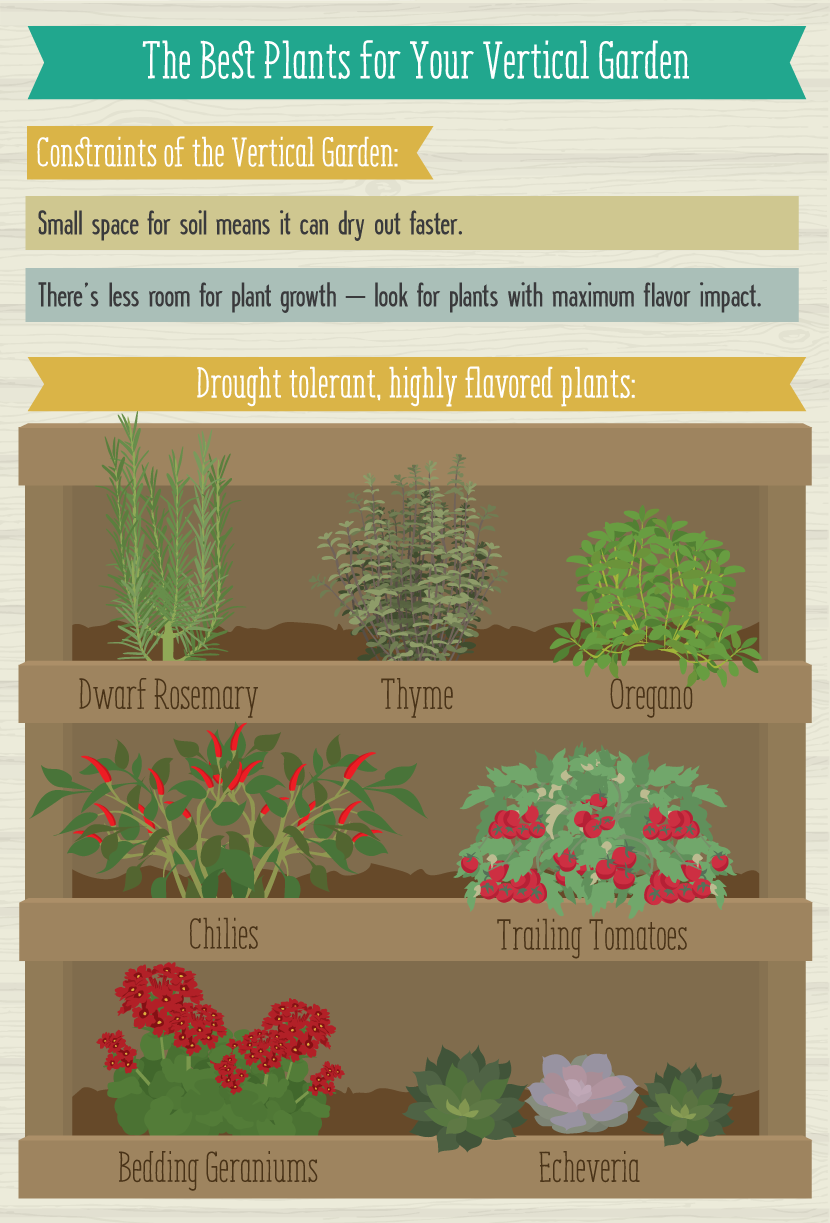Saving Space With Vertical Gardens
It is easy to feel disheartened and discouraged if your gardening space is the size of a postage stamp, but you shouldn’t. You can maximize the space you have in a number of ways by remembering that plants are happy to grow anywhere as long as they have a little bit of soil, some sunshine, and a drop of water. You can use your vertical space in many different ways, and the size of your garden, patio, or balcony will be almost irrelevant.
Green Walls
Green walls are striking, unusual features that, depending on your budget, can be as high-tech, low-tech, large, or small as you wish. The basic idea is to suspend a panel containing just enough growing media against a wall. Place your plants in it, and allow water to drip down through the media by automatic or manual means. The roots take up the moisture, and your plants should thrive. In some places, this idea has been taken to a most spectacular level with vast outside walls covered in a tapestry of growing plants. You can recreate a more low-key version against a wall of your own.

One of the simplest ways of doing this is to plant up a pallet and attach it to a wall. You can use two basic methods here. In the first, you use a thick landscape fabric to create planting pockets along each “shelf” of the pallet; in the second, you fill the whole thing with soil and place your plants in it. For the second method, lay the pallet flat and staple a double layer of thick landscape fabric to the back. Turn it over again and fill the whole thing with compost. Tamp the compost down until it’s firm, plant up, set it against a wall, and water it from above. You may wish to place a length of soaker hose along the top to trickle water slowly into the structure.
Planting pockets are panels of small containers designed to be hung from a wall. Some are made of fabric, while others are made of more solid material, such as plastic. Either way, the idea is the same: hang the panels on the wall, fill them with compost, and plant up. This can be a much simpler way of getting a little of the “green wall” effect.
Wall planters are half-pots or half-baskets attached directly to a wall with brackets. They take up very little space and offer a simple design and use. Fill them with trailing geraniums in the summer to create the atmosphere of a little Spanish courtyard.

Hanging Plants
If you run out of wall space, look to the skies. Hanging baskets require only a sturdy nail to swing from; in return, they will drip with greenery and flowers all summer long. They are cheap to buy and easy to plant up. You will need a few things: the hanging basket itself (bigger is almost always better; the smaller ones dry out fast), a liner of some sort to hold in the compost (real moss pulled up from a lawn works well, but some perfectly respectable fake moss liners are available), a small square cut from a plastic bag, some compost, and some plants. If you are planting for food, choose herbs, trailing tomatoes, and strawberries, all of which make brilliant hanging basket inhabitants. If all you want from your hanging basket is beauty, choose colorful bedding plants.
The traditional recipe for a good-looking hanging basket includes particular ingredients: one upright, bushy, colorful star plant (such as a bedding geranium, begonia, or fuchsia); a few complementary secondary flowering plants (such as busy lizzies, nemesia, or pansies); and a few trailing or filler plants (such as petunia, bacopa, or lobelia). You can also try less-traditional combinations, such as striking baskets with only one plant – slightly trailing ones work best – or simple combinations of two plants.
Start making your basket by balancing it on the top of a pot, then line it and lay the piece of plastic in the base. This will act as a reservoir for water to help prevent the compost from drying out. Fill the basket with compost until it’s about one-third full, and then plant a few trailing plants into the sides. Build up the compost by another third, covering any roots as you go, and place a few more plants in the sides. Then fill the basket almost to the top with compost (always leave an inch or so of space to make watering easier) and plant the following into the top: one big plant at the center, support plants and fillers around the center plant, and trailers at the edges.

Climbing Supports
If you have space for a pot, you have space for a climbing plant. A climber takes up very little space on the ground. You can place your pot next to a wall-mounted trellis and have your climber ascend that. If you have run out of wall space, don’t fear: you can create a free-standing climbing support that will allow you to grow climbing, flowering plants, such as clematis and passion flowers, and edible plants, such as cucumbers and melons, in a tiny area.
Choose as large a pot as you can manage and push three canes into it to form a tripod. Tie the canes together at the top and use string to tie the canes together down the length, at one-foot intervals, to create a set of “rungs” for the plants to climb. If you have a larger budget, look for obelisks, which are structures that you can slot into pots for plants to climb up.
Care
Whatever method you use to green up your vertical spaces, your success or lack thereof will entirely depend on the level of care you lavish on the pots and containers you create. Green walls and pots rely on you for water and food. Regularly give them plenty of both, and they will reward you by making color and bounty spring from a place that was previously only concrete and brick.
Embed the article on your site

